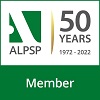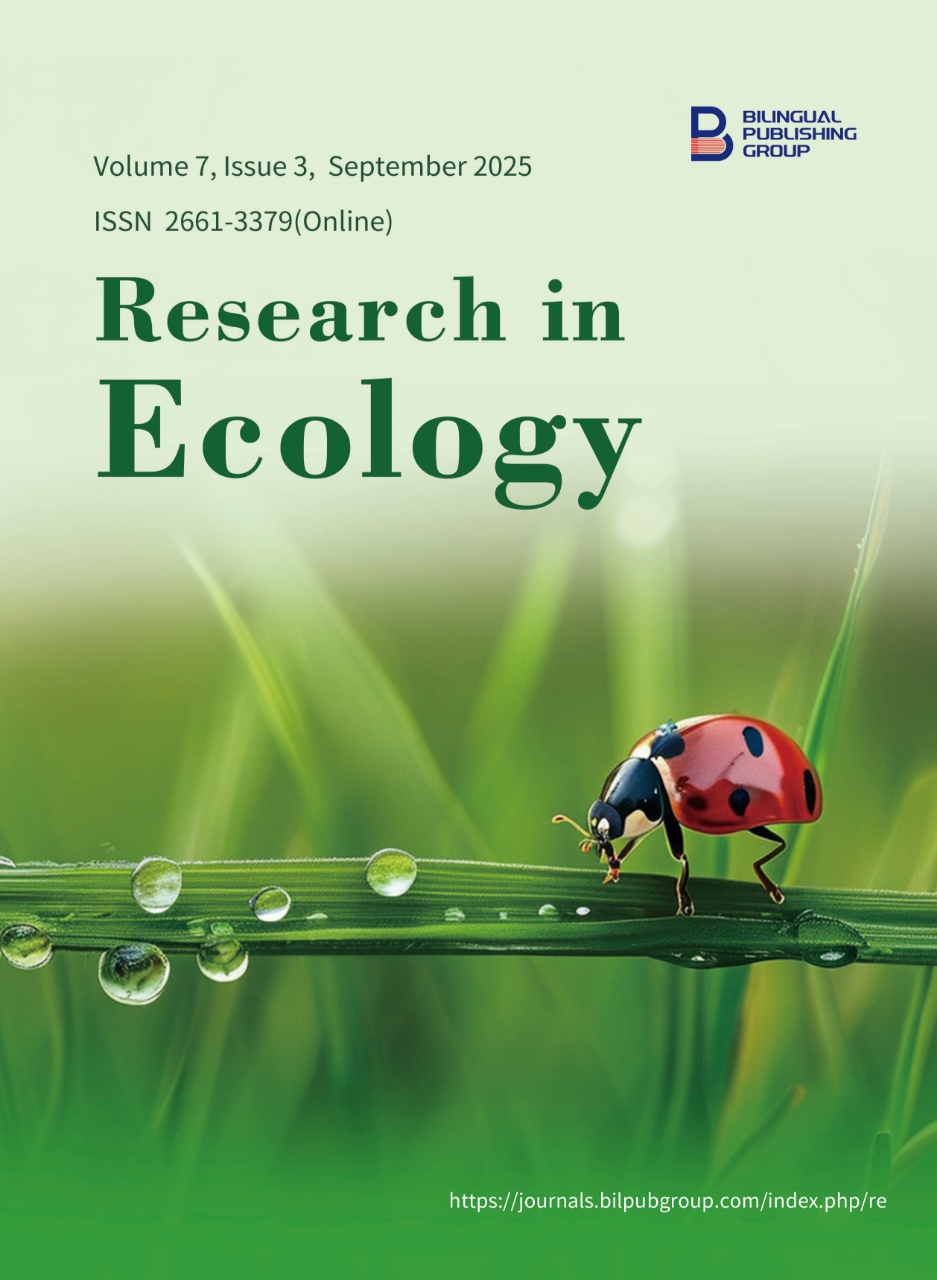
Physicochemical and Heavy Metal Characterization of River Kapingazi in Embu County, Kenya
DOI:
https://doi.org/10.30564/re.v7i3.9873Abstract
Surface water provides crucial support to the aquatic ecosystem and humans in numerous ways. However, its quality is paramount in determining its impact on the health of the aquatic ecosystem and humans. Currently, the malady of pollution arising from anthropogenic activities poses a significant threat to the quality of most rivers. The quality of water in the Kapingazi river in Embu County has received limited attention which is a concern that needs to be addressed. This study therefore, sought to investigate the status of water quality in river Kapingazi. The study analyzed 96 samples from four locations in a span of eight months which combined the dry and wet seasons of the year. Parameters measured in-situ included turbidity, pH, total dissolved solids (TDS), temperature, dissolved oxygen (DO) and electrical conductivity (EC) while ex-situ parameters were phosphates, nitrates and concentrations of heavy metals: iron and manganese. Results showed that Water Quality Index (WQI) during the drought period was74.05, suggesting that the water quality is only recommended for agricultural and industrial applications. During wet season, the water quality index was 89.67, reflecting a poor status, as more contaminants were likely introduced through surface runoff. Overall, the WQI averaged to 88.02. This study concludes that water in River Kapingazi is not suitable for human consumption; therefore, appropriate treatment is essential prior to its use. Similarly, the findings indicate that both rainy and drought periods significantly affect water quality, presenting challenges for its use for various purposes. It is recommended that the allocation of resources towards water treatment facilities and regulation of pollution sources should be enforced to ensure the safety of river water for diverse applications.
Keywords:
Water Quality; Heavy Metals; River Kapingazi; Pollution; Physical & Chemical ParametersReferences
[1] Xiang, X., Li, Q., Khan, S., et al., 2021. Urban water resource management for sustainable environment planning using artificial intelligence techniques. Environmental Impact Assessment Review. 86, 106515.
[2] Yang, D., Yang, Y., Xia, J., 2021. Hydrological cycle and water resources in a changing world: A review. Geography and Sustainability. 2(2), 115–122.
[3] El-Batrawy, O.A., Ibrahim, M.S., Fakhry, H., et al., 2018. Anthropogenic impacts on water quality of River Nile and marine environment, Rosetta Branch using geospatial analyses. Journal of Environmental Science. 47, 89–101.
[4] Gupta, S., Gupta, S.K., 2021. A critical review on water quality index tool: genesis evolution, and future directions. Ecological Informatics. 63, 101299.
[5] Mahlathi, C., Siyakatshana, N., Chirwa, E., 2016. Water quality modelling and optimisation of wastewater treatment network using mixed integer programming. Water SA. 42(4), 650–657.
[6] Nagy-Kovács, Z., Davidesz, J., Czihat-Mártonné, K., et al., 2019. Water quality changes during riverbank filtration in Budapest. Water. 11, 302.
[7] Sandhu, C., Grischek, T., Börnick, H., et al., 2019. A water quality appraisal of some existing and potential riverbank filtration sites in India. Water. 11, 215.
[8] Mogane, L.K., Masebe, T., Msagati, T.A., et al., 2023. Water quality index models for lotic and lentic ecosystems – A systematic review. Environmental Monitoring and Assessment. 195(8), 926.
[9] Akhtar, N., Syakir Ishak, M.I., Bhawani, S.A., et al., 2021. Various natural and anthropogenic factors responsible for water quality degradation: A review. Water. 13(19), 2660.
[10] Isukuru, E.J., Opha, J.O., Isaiah, O.W., et al., 2024. Nigeria's water crisis: Abundant water, polluted reality. Cleaner Water. 2, 100026.
[11] Nkatha, K., 2024. Water woes: 13 undeniable facts about Africa's water. Greenpeace. Available from: https://www.greenpeace.org/africa/en/blog/55086/water-woes-13-undeniable-facts-about-africas-water-scarcity/ (cited 8 April 2025).
[12] Mulwa, F., Li, Z., Fangninou, F.F., 2021. Water scarcity in Kenya: current status, challenges and future solutions. Open Access Library Journal. 8(1), 1–15.
[13] Khan, S., Guan, Y., Khan, F., et al., 2020. A comprehensive index for measuring water security in an urbanizing world: the case of Pakistan's capital. Water. 12(1), 166.
[14] United Nations, 2023. Global Report on Sanitation and Wastewater Management in Cities and Human Settlements.
[15] Gaffan, N., Kpozehouen, A., Degbey, C., et al., 2023. Effects of household access to water, sanitation, and hygiene services on under-five mortality in Sub-Saharan Africa. Frontiers in Public Health. 11, 1136299.
[16] Hlongwa, N., Nkomo, S.P.L., Desai, S.A., 2024. Barriers to water, sanitation, and hygiene in Sub-Saharan Africa: a mini review. Journal of Water Sanitation and Hygiene for Development. 14(7), 497–510.
[17] Tariq, A., Mushtaq, A., 2023. Untreated wastewater reasons and causes: a review of most affected areas and cities. International Journal of Chemical and Biochemical Sciences. 23(1), 121–143.
[18] Fabian, P.S., Kwon, H.H., Vithanage, M., et al., 2023. Modelling, challenges and strategies for understanding impacts of climate extremes (droughts and floods) on water quality in Asia: a review. Environmental Research. 225, 115617.
[19] Zou, X.Y., Peng, X.Y., Zhao, X.X., et al., 2023. The impact of extreme weather events on water quality: International evidence. Natural Hazards. 115(1), 1–21.
[20] Zhang, Y., Zhao, Z., Zhu, J., et al., 2024. The dynamic patterns of critical ecological areas in the Yellow River Basin are driven primarily by climate factors but threatened by human activities. Journal of Environmental Management. 371, 123282.
[21] Ireri, B.K., Makenzi, P.M., Makindi, S.M., et al., 2024. Provisioning of water ecosystem services in the Kapingazi River Basin in Kenya: can prospects of willingness to pay improve water quality and quantity? Water International. 49(3–4), 410–416.
[22] Njoroge, M., Mwangi, E., Wandili, S., 2024. Utilization of bamboo biochar as an adsorbent in the removal of heavy metals from wastewater stabilization ponds effluent in Embu Town, Kenya. African Journal of Science, Technology and Social Sciences. 3(2), 9–18.
[23] Balana, B., Yatich, T., Mäkelä, M., 2011. A conjoint analysis of landholder preferences for reward-based land-management contracts in Kapingazi watershed, Eastern Mt. Kenya. Journal of Environmental Management. 92, 2634–2646.
[24] Al-Ani, I.A., 2019. Mathematical computation of water quality index for the assessment of Al-Hilla River ecosystem. International Journal of Civil Engineering and Technology. 10(1), 1862–1869.
[25] Srinivas, P., Kumar, G.P., Prasad, A.S., et al., 2011. Generation of groundwater quality index map – A case study. Civil and Environmental Research. 1(2), 9.
[26] Wekesa, A.M., Otieno, C., 2022. Assessment of groundwater quality using water quality index from selected springs in Manga Subcounty, Nyamira County, Kenya. Scientific World Journal. 2022(1), 3498394.
[27] Rahman, A., Jahanara, I., Jolly, Y.N., 2021. Assessment of physicochemical properties of water and their seasonal variation in an urban river in Bangladesh. Water Science and Engineering. 14(2), 139–148.
[28] Chai, N., Yi, X., Xiao, J., et al., 2021. Spatial–temporal variations, sources, water quality and health risk assessment of trace elements in the Fen River. Science of the Total Environment. 757, 143882.
[29] Oputu, O.U., Akharame, M.O., 2024. Assessment of surface water quality within Cape Town, South Africa using NSF water quality index. International Journal of Energy and Water Resources. 8(4), 493–505.
[30] Mishra, K., Choudhary, B., Fitzsimmons, K.E., 2024. Predicting and evaluating seasonal water turbidity in Lake Balkhash, Kazakhstan, using remote sensing and GIS. Frontiers in Environmental Science. 12, 1371759.
[31] Marisi, D.P., Suprihatin, S., Hariyadi, S., et al., 2025. The impacts of land use and cover change on water quality of watershed basin. Global Journal of Environmental Science and Management. 27(11), 1019.
[32] Osifeso, O.O., Umoren, O.D., Akinbola, M.G., et al., 2025. Heavy metals (HMs) concentration in two sections of Ogun River, Abeokuta, Ogun State, Nigeria. World News of Natural Sciences. 60, 115–125.
[33] Dey, S., Botta, S., Kallam, R., et al., 2021. Seasonal variation in water quality parameters of Gudlavalleru Engineering College pond. Current Research in Green and Sustainable Chemistry. 4, 100058.
[34] Saturday, A., Lyimo, T.J., Machiwa, J., et al., 2021. Spatial–temporal variations in physicochemical water quality parameters of Lake Bunyonyi, Southwestern Uganda. SN Applied Sciences. 3(7), 684.
[35] Haghighizadeh, A., Rajabi, O., Nezarat, A., et al., 2024. Comprehensive analysis of heavy metal soil contamination in mining environments: impacts, monitoring techniques, and remediation strategies. Arabian Journal of Chemistry. 105777.
[36] Hou, W., Wang, H., Zheng, Y., et al., 2022. Seasonal variation characteristics of water quality in the Sunxi River Watershed, Three Gorges Reservoir Area. PeerJ. 10, e14233.
[37] Walumona, J.R., Odoli, C.O., Raburu, P., et al., 2021. Spatio–temporal variations in selected water quality parameters and trophic status of Lake Baringo, Kenya. Lakes & Reservoirs: Research & Management. 26(3), e12367.
[38] Chen, S.S., Kimirei, I.A., Yu, C., et al., 2022. Assessment of urban river water pollution with urbanization in East Africa. Environmental Science and Pollution Research. 29(27), 40812–40825.
[39] Aduwo, A.I., Adeniyi, I.F., 2019. The physico-chemical water quality of the Obafemi Awolowo University teaching and research farm lake, OAU campus, Ile-Ife, Southwest, Nigeria. Journal of Environmental Protection. 10(7), 881.
[40] Subramanian, A., Baskar, S., 2022. Water quality assessment of Noyyal River using water quality index (WQI) and multivariate statistical techniques. Water Science. 36(1).
[41] Ram, A., Tiwari, S.K., Pandey, H.K., et al., 2021. Groundwater quality assessment using water quality index (WQI) under GIS framework. Applied Water Sciences. 11, 1–20.
[42] Abdul Maulud, K.N., Fitri, A., Wan Mohtar, W.H.M., et al., 2021. A study of spatial and water quality index during dry and rainy seasons at Kelantan River Basin, Peninsular Malaysia. Arabian Journal of Geosciences. 14, 1–19.
Downloads
How to Cite
Issue
Article Type
License
Copyright © 2025 Naomy Chepkirui Yego, Charles Onyari Nyambane, Rebbecca Yegon, Shadrack Kiprotich

This is an open access article under the Creative Commons Attribution-NonCommercial 4.0 International (CC BY-NC 4.0) License.




 Naomy Chepkirui Yego
Naomy Chepkirui Yego






